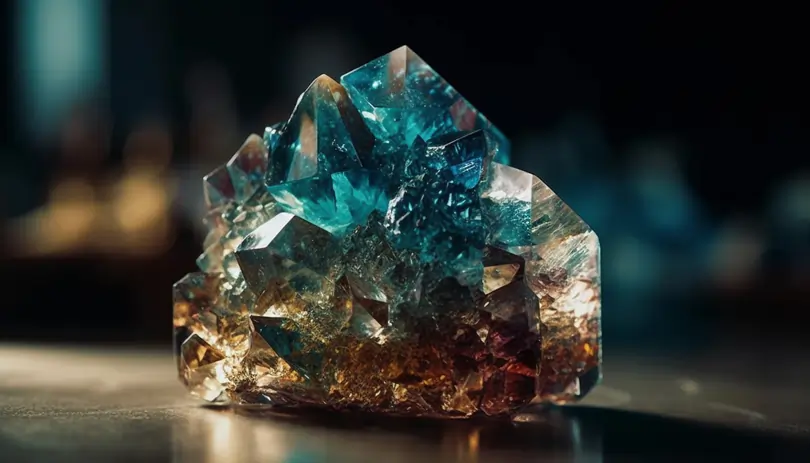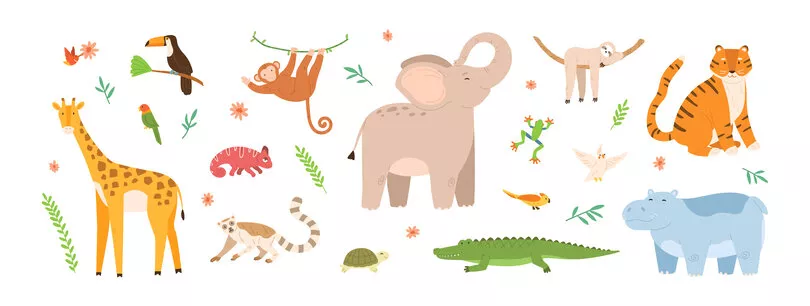Light - Shadows
In this article, you will be introduced to the concept on shadows based on the Singapore Primary 4 Science Syllabus. We will focus on the following two main aspects:
- Shape of a shadow
- Size of a shadow
What is a Shadow?
A shadow is a region of darkness that is formed when light is partially or completely blocked by an object. This happens because light travels in straight lines and cannot bend around the object.
To form a shadow, you need three things: A source of light, an object and a screen.
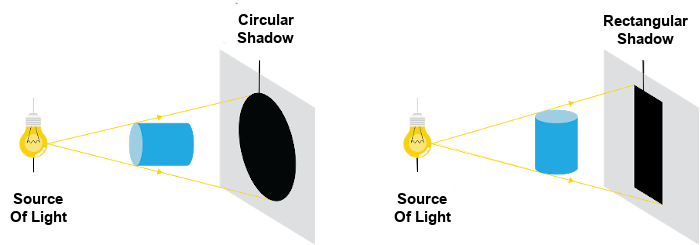
Shape of a Shadow
The shape of a shadow usually follows the shape of the object. For example, the shadow formed by a ball will be circular in shape. Likewise, the shadow of a cube will be square-shaped.
However, shadows of different shapes can be formed by the same object if the light source is shining at different parts of the object.
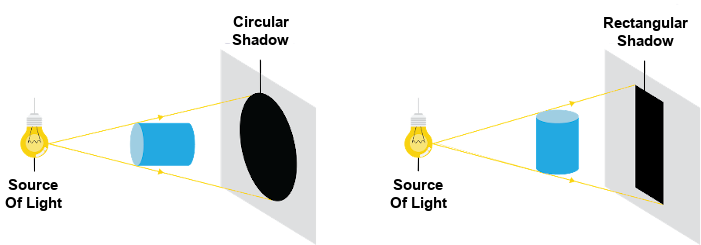
Size of a Shadow
The size of the shadow depends on the following two factors:
- Distance between the object and the light source
- Distance between the object and the screen
-
Distance between the object and the light source
Let us now examine how the size of a shadow changes as the distance between the object and the light source changes.
Diagram 1 shows the shadow formed when the object is placed at an equal distance from the screen and the light source.
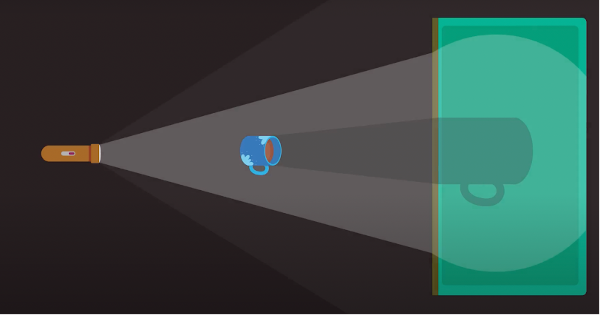
Diagram 1
Now, let us observe what happens when we move the light source closer to the object, as shown in Diagram 2 below.

Diagram 2
Did you realise that the shadow formed by the cup in Diagram 2 is bigger?
As the distance between the object and the light source decreases (when the light source is nearer to the object), the size of the shadow increases.
What do you think will happen to the size of the shadow when we move the light source further away from the object? Let us find out by examining Diagram 3!
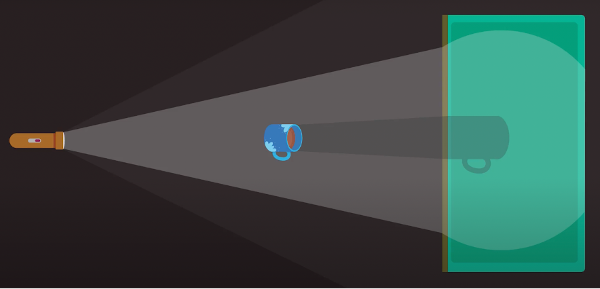
Diagram 3
Did you manage to predict that the shadow formed by the cup will be smaller when the light source is moved further from the object?
As the distance between the object and the light source increases (when the light source is further from the object), the size of the shadow decreases.
-
Distance between the object and the screen
Let us now examine how the size of a shadow changes as the distance between the object and the screen changes.
In Diagram 4, the screen is moved further from the object. Observe how the shadow formed is larger than that formed in Diagram 1.
As the distance between the object and the screen increases (when the screen is further from the object), the size of the shadow increases.
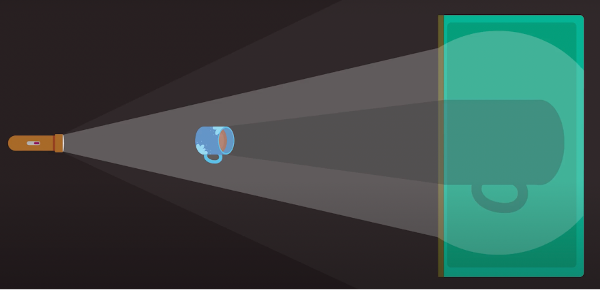
Diagram 4
When we move the screen closer to the object as shown in Diagram 5, you will notice that the shadow formed is smaller than that formed in Diagram 1.
As the distance between the object and the screen decreases (when the screen is closer to the object), the size of the shadow decreases.

Diagram 5
Conclusion
In this article, we learnt that shadows are formed when light is partially or completely blocked by objects. We also learnt about the two different factors that will affect the size of the shadow, which is the distance between the object and the light source, and the distance between the object and the screen.
Test Yourself
A shadow is cast on the screen when a wooden block is placed between a light source and a white screen as shown in the diagram below.

To make the shadow smaller, you should move the __________ .
1: wooden block nearer to the screen
2: torch nearer to the wooden block
3: wooden block nearer to the torch
4: screen further from the wooden block
The nearer the object is to the light source; the bigger the shadow formed. The nearer the screen is to the object; the smaller the shadow is formed.
Jane used a torch to create a shadow on a screen using an opaque object as shown below.

If she wants to obtain a bigger shadow, what must she do?
1: Move the screen nearer to the object.
2: Move the torch further from the object.
3: Move the object and torch nearer to the screen.
4: Move the object and torch further from the screen.
When the screen is further away, the shadow formed on the screen will become bigger.
Robert placed a torch at position K. The torch shone at the object that was placed at position M as shown below. A shadow was cast on the screen.

At which positions of the ruler should the torch and the object be placed so as to obtain a smaller shadow on the screen than before?
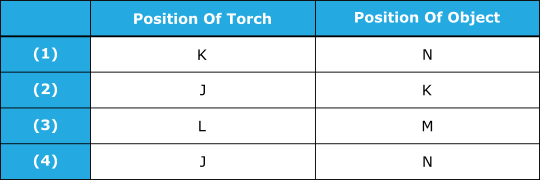
The nearer the object is to the light source; the bigger the shadow formed. The nearer the screen is to the object; the smaller the shadow is formed.
Kim cut out a circle from a sheet of clear plastic and a triangle from a sheet of metal as shown below. Then the two sheets were glued one on top of another. He then placed it between the torch and a screen in a dark room as shown below.

Which one of the following could be the shadow cast on the screen?

Clear plastic sheet is transparent, it allows most light to pass through. Hence, it will not cast a shadow.On the other hand, metal sheet is opaque, it does not allow light to pass through. Therefore, it will cast a dark shadow with a triangle in it. The size of the shadow must also correspond to the metal plate. Since (3) shows a greater amount of metal blocking the light, it is incorrect as the triangle that was cut out from the metal plate is bigger in size.
The tennis racket casts a shadow on the ground as shown below.
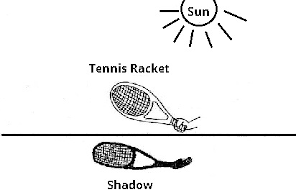
When the tennis racket is moved a few centimeters away from the ground, it gives a __________ image on the ground.
The further away the object is from the ground, the bigger the shadow formed.
The shadow will also become more blur.


 SG
SG  VN
VN 


